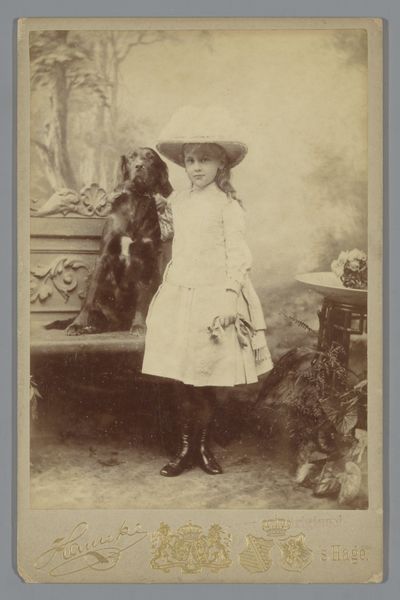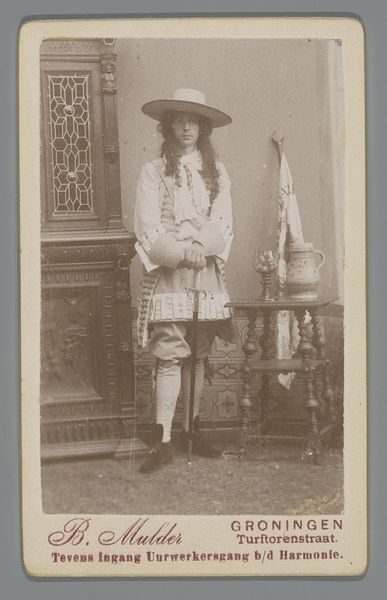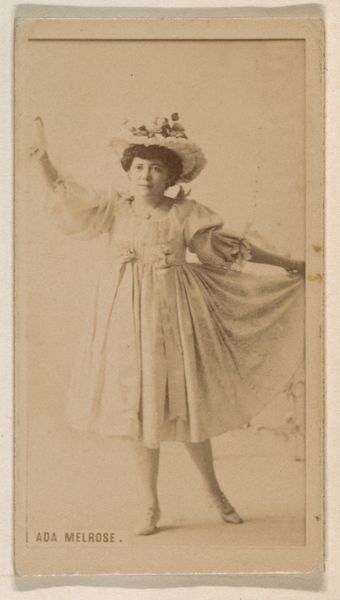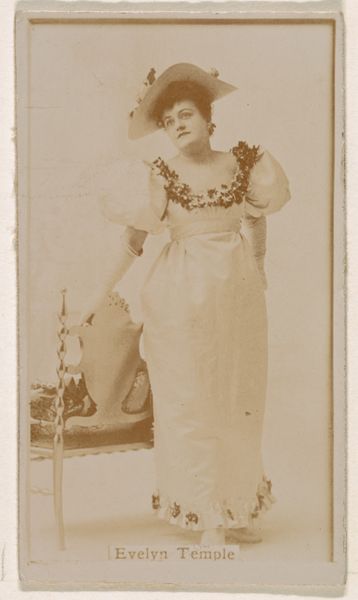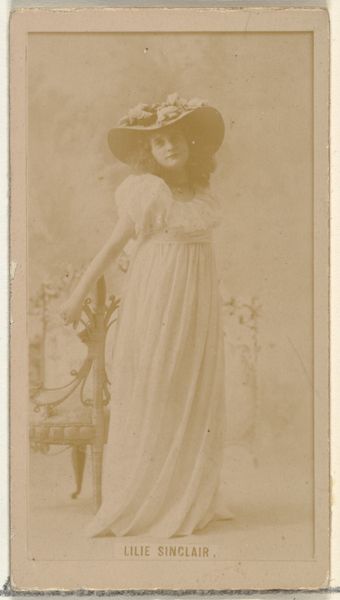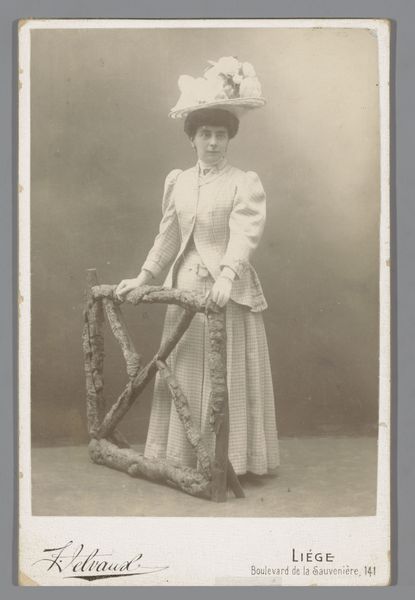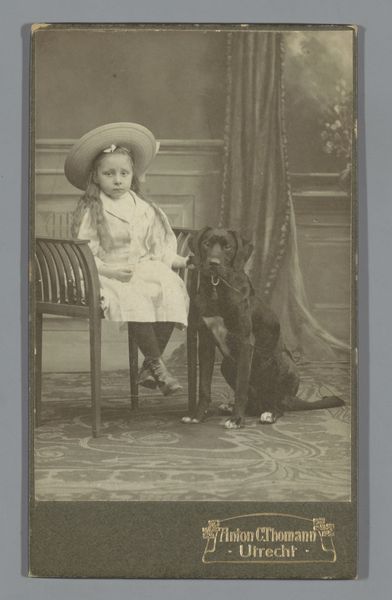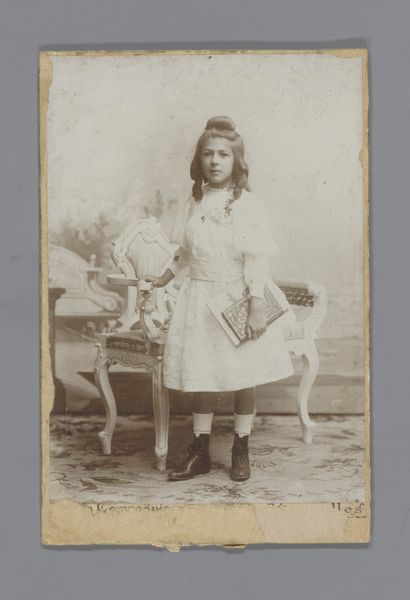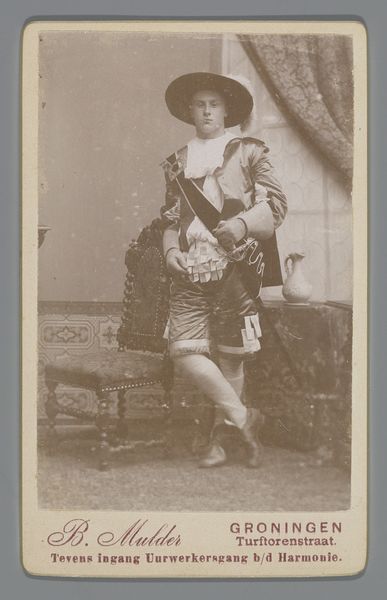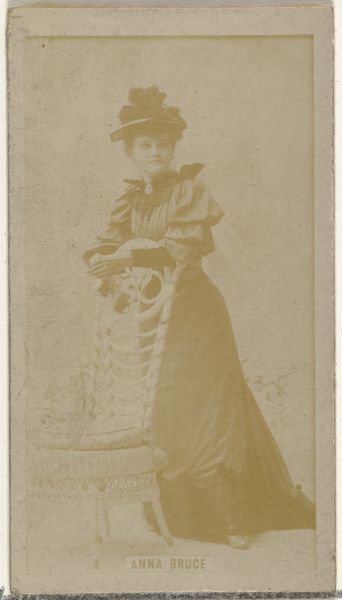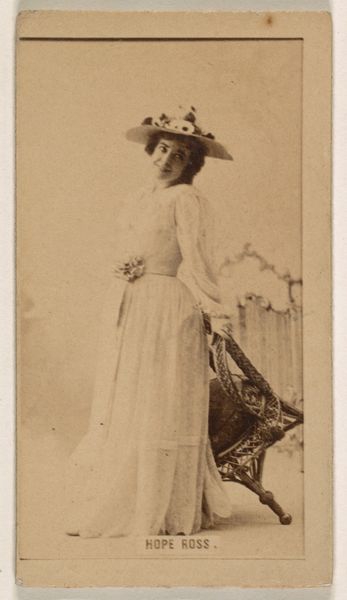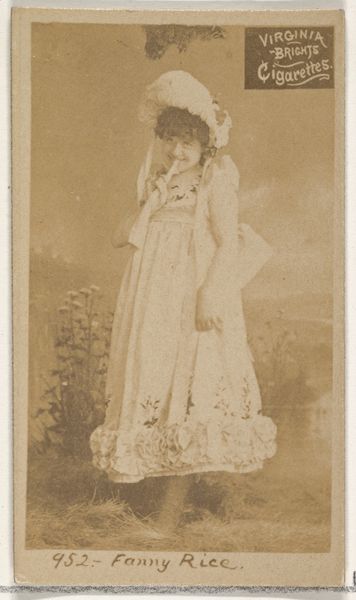
Portret van een onbekend meisje met een paraplu in de hand met daarnaast een kleine hond op een balustrade 1883 - 1900
0:00
0:00
photography
#
portrait
#
still-life-photography
#
dog
#
photography
#
genre-painting
Dimensions: height 103 mm, width 62 mm
Copyright: Rijks Museum: Open Domain
Curator: This is "Portret van een onbekend meisje met een paraplu in de hand met daarnaast een kleine hond op een balustrade", by Kars Karsen Jr., likely created between 1883 and 1900. Editor: The immediate sense is of studied formality, wouldn't you say? A girl posed alongside a little dog – almost like two meticulously arranged still-life elements. Curator: Precisely. This aesthetic reflects a shift in photography during this era. Photography moved from a strictly documentary tool toward genre painting and artistic expression. Note the manufactured backdrop, which signals the studio as a site of artifice, contrasting with the subject. Editor: Absolutely, and if we look at the details—the clothing, the presence of the pet—it reveals the rise of bourgeois portraiture as a marker of status. This little dog surely a pampered accessory! It makes you think about the growth of pet ownership, and how commodity culture affected photography in that period. Curator: Right. Think about how access to photography was evolving. Earlier photography required expertise, but by the late 19th century, technological advancements like faster shutter speeds and pre-prepared plates enabled artists such as Karsen Jr. to experiment with portraiture. We must also reflect upon the commercial and industrial structures behind image creation and its implications for art history, photography included. Editor: I see the potential for tension too. This formal, rather static pose arguably hides much about this child's reality. Her attire, which is carefully curated and constructed for this one captured moment in time, tells the viewer about class but does little else, almost like stage dressing! Curator: Good point. Her agency, or lack thereof, is definitely at play. The backdrop, too, is worth noting. Balustrades symbolized the access to status, framing this subject within societal boundaries that dictate femininity. But look at the visible brushstrokes on that backdrop! It exposes artifice to demystify assumptions around art and its audience. Editor: Agreed. So, the artwork presents the illusion of upper-middle-class refinement whilst offering, almost deliberately, an insight into the artifice behind this form of portraiture? It seems a portrait of that culture, in fact. Curator: Yes, that interplay, how those factors contributed to photographic practice is key to understanding this artist's technique. Editor: In that case, the value of photography as a mode of historic study deepens here... it prompts an immediate understanding of photographic process within cultural frameworks, really brings it to life.
Comments
No comments
Be the first to comment and join the conversation on the ultimate creative platform.
